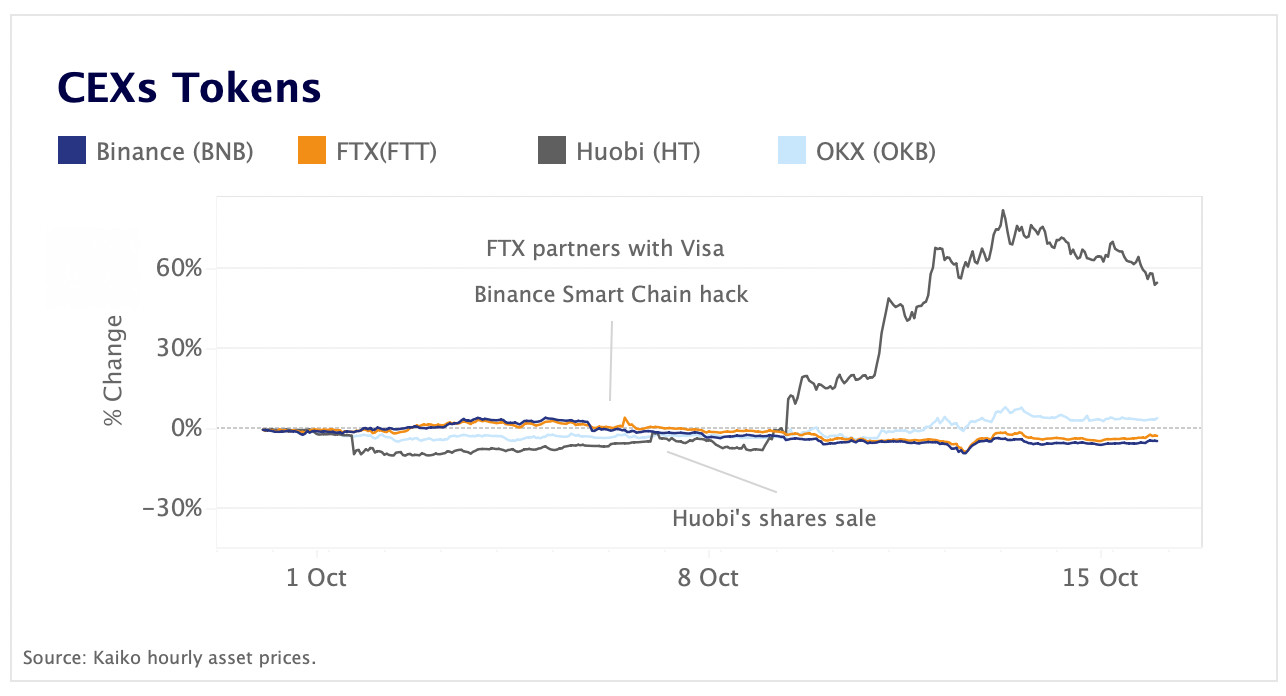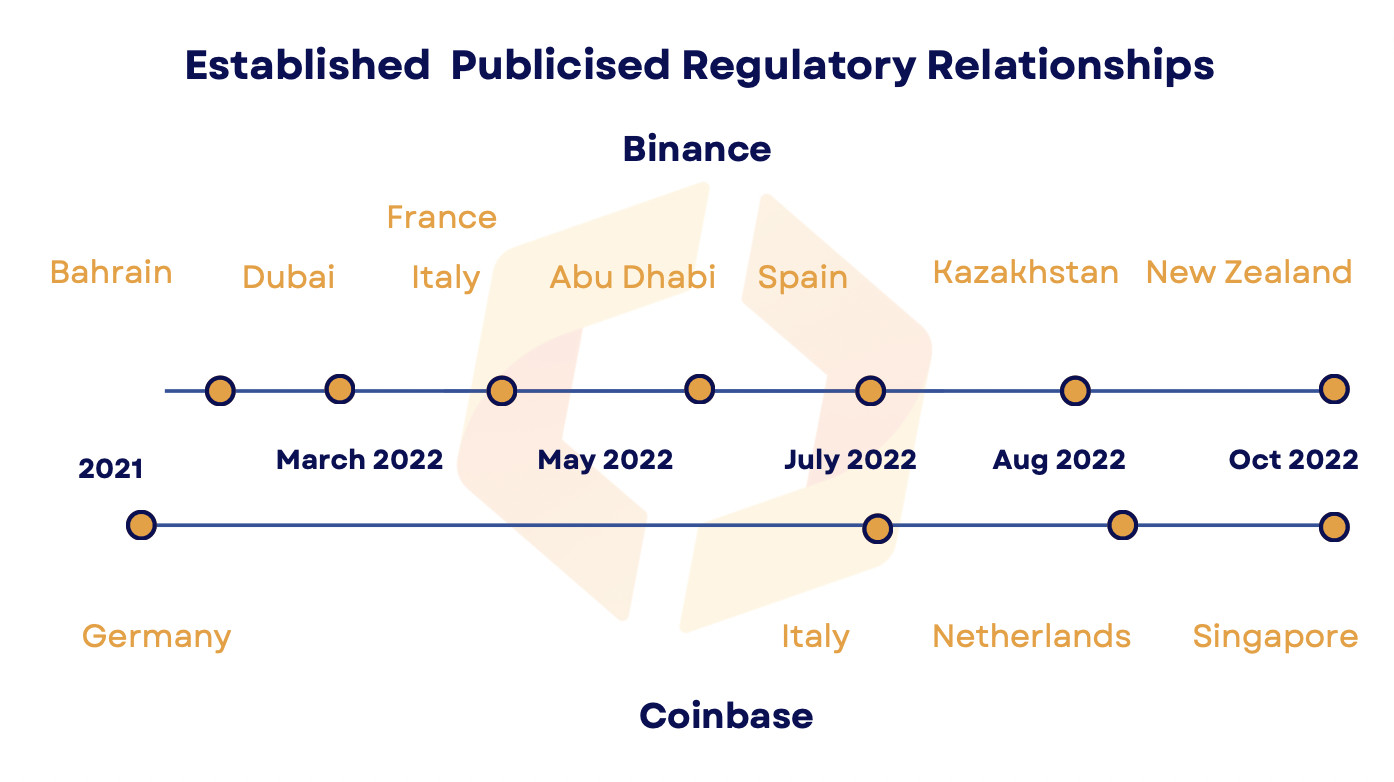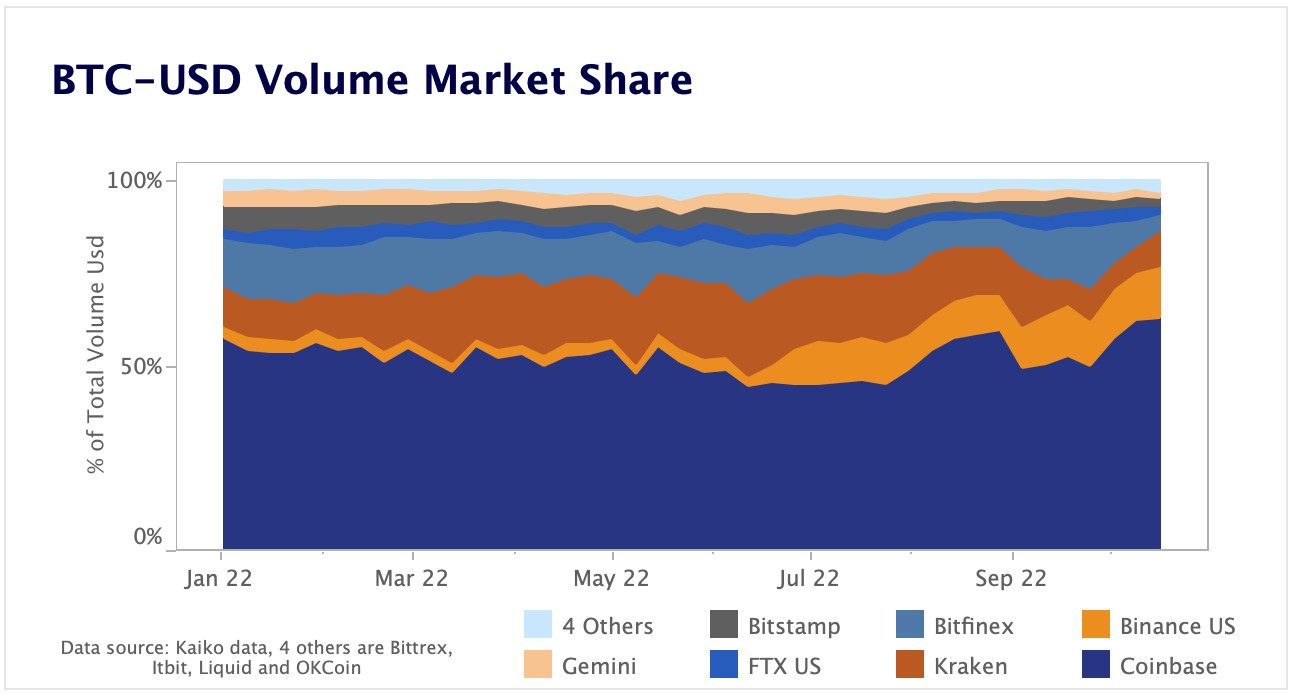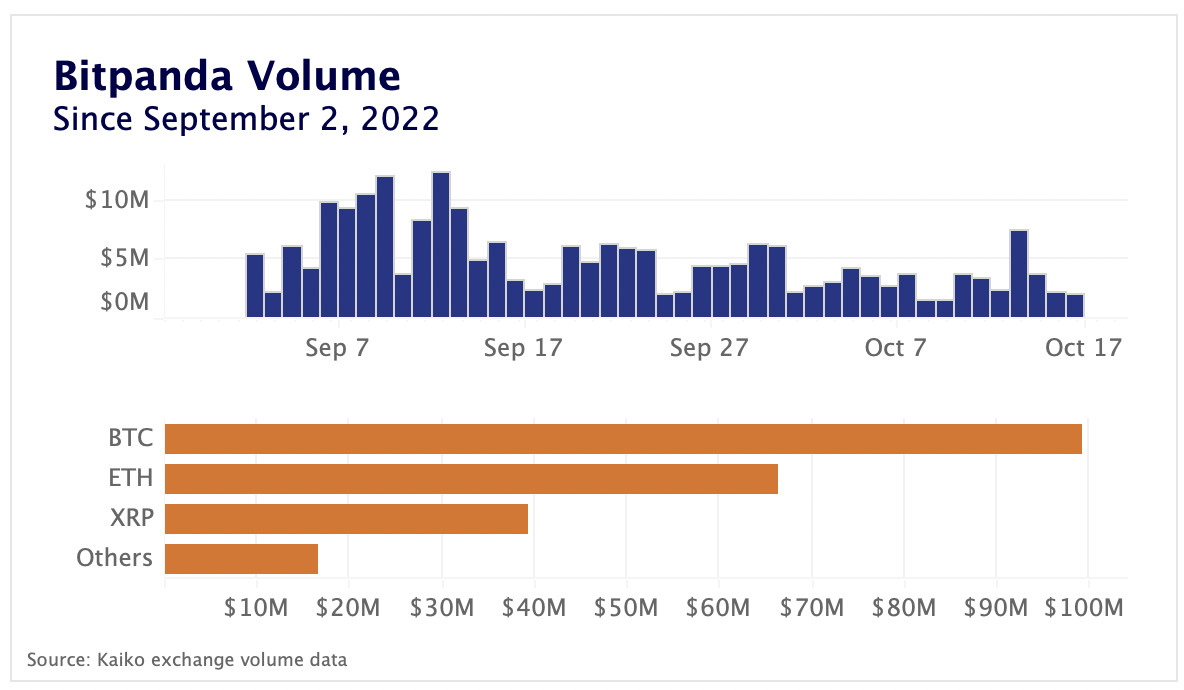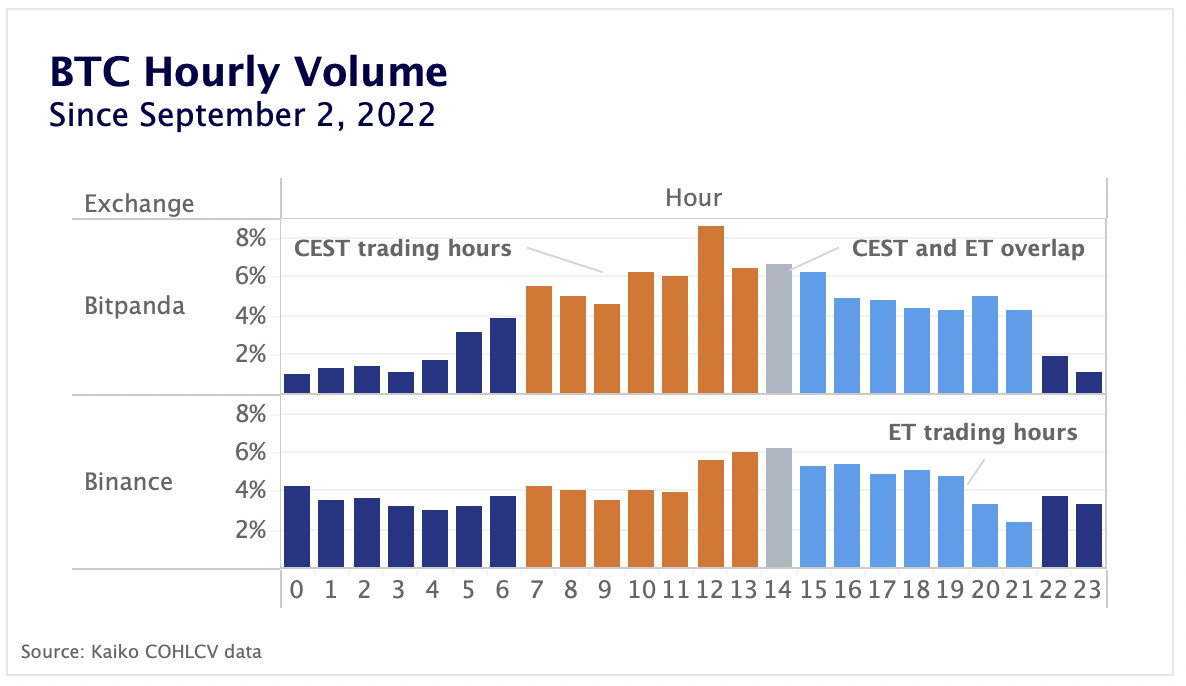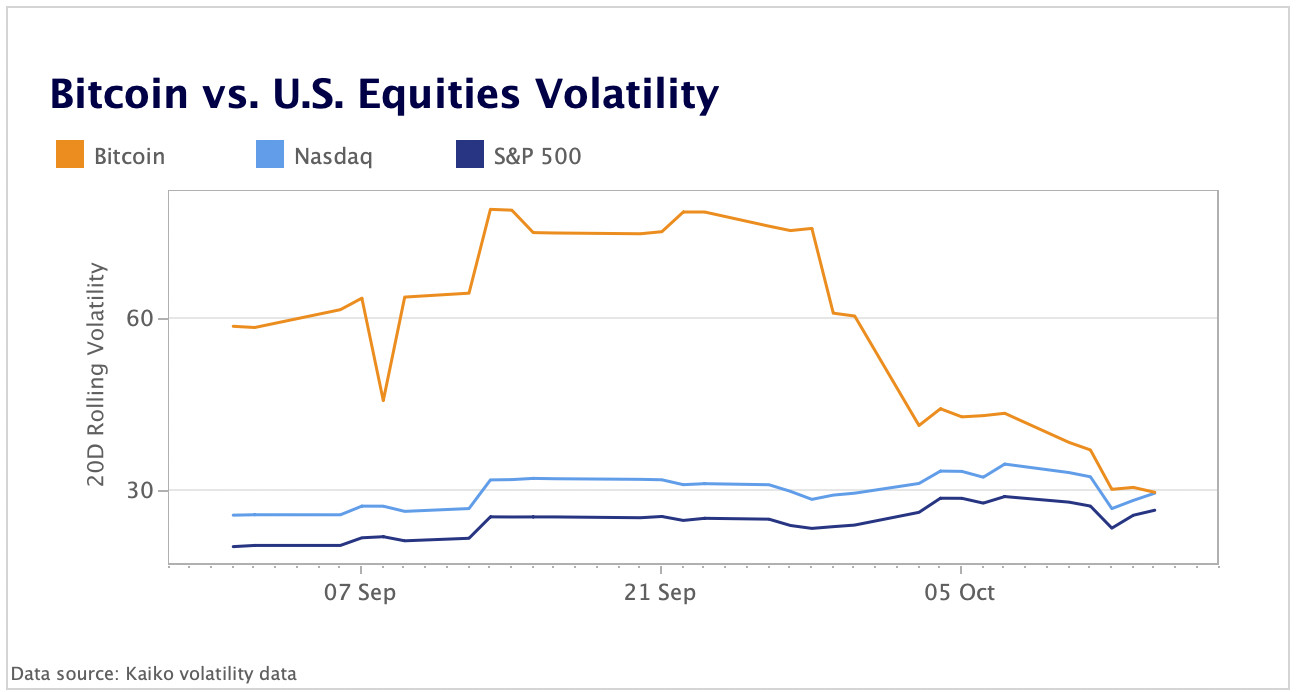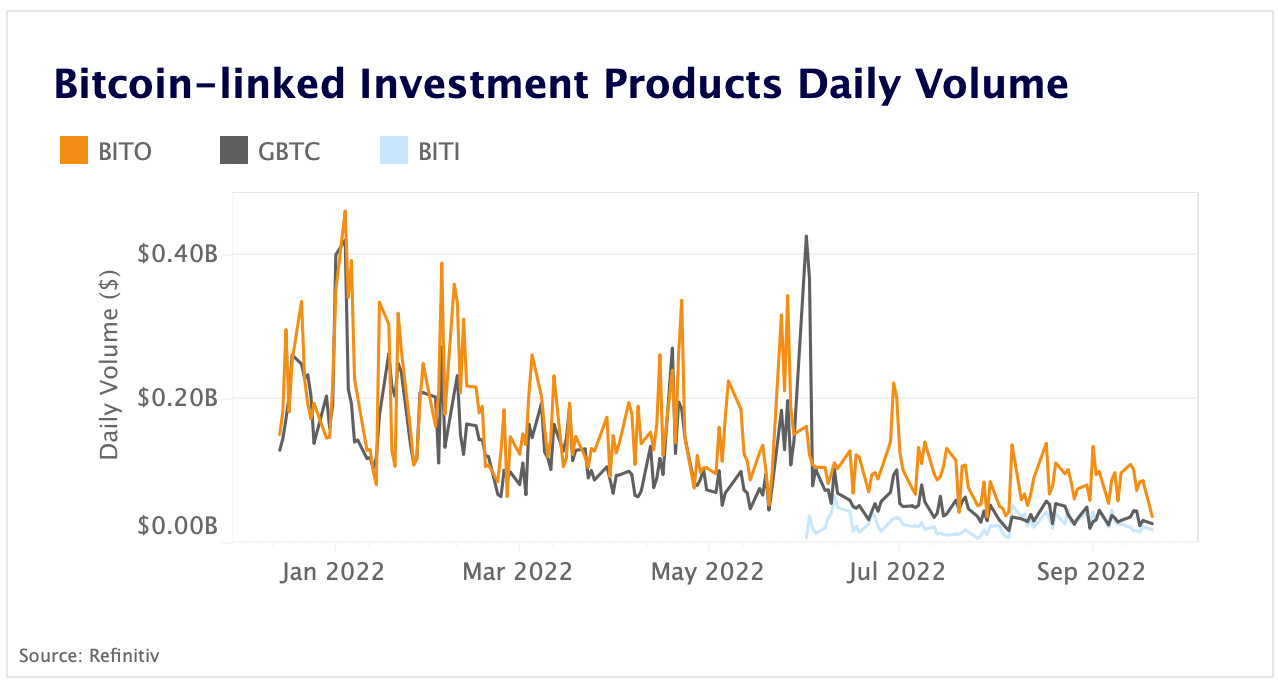A summarizing review of what has been happening at the crypto markets of the past week. A look at trending sectors, liquidity, volatility, spreads and more. The weekly report in cooperation with market data provider Kaiko.
The last 7 days in cryptocurrency markets:
- Price Movements: Bitcoin falls to its lowest level since 2020 following hot U.S. inflation print but stages modest recovery after.
- Market Liquidity: Coinbase regains dominant BTC-USD market share.
- Derivatives: Open interest on Binance plummets following dramatic price moves.
- Macro Trends: Bitcoin's 20-day volatility falls to equal Nasdaq in October.
Bitcoin falls to its lowest level since 2020
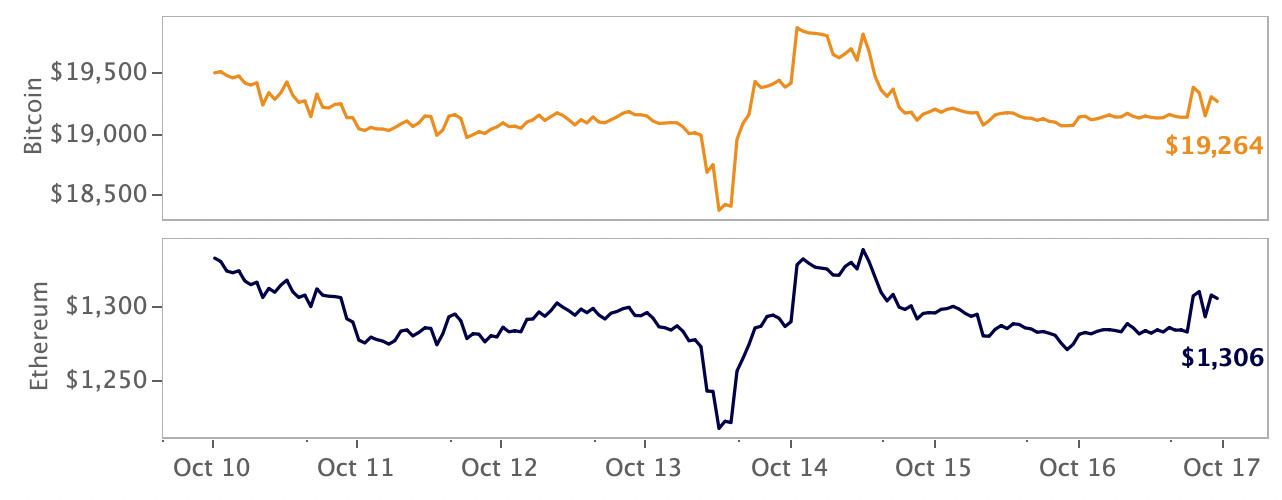
Last week volatility in both equity and crypto markets surged after U.S. core consumer price inflation (excluding food and energy costs) hit a 40-year high, pushing up expectations for the Fed’s terminal rate to nearly 5%. Bitcoin (BTC) initially fell below $18k after the release - its lowest level since December 2020 - before staging a respectable recovery of 8% within a few hours as markets corrected what now looks like an overblown sell-off. The psychologically important $20k level for BTC now awaits and could lead to another leg higher if breached.
In other industry news, Google Cloud will let users pay with Bitcoin, Ethereum (ETH) and Dogecoin via Coinbase in 2023. The world’s largest custodian bank - BNY Mellon launched BTC and ETH custody for investment firms. Meanwhile, Solana DeFi trading platform Mango Markets suffered a $100mn exploit via collateral manipulation.
Huobi’s Token surges following shares sale announcement
Huobi’s utility token HT surged by over 50% since the start of October, significantly outperforming other centralized exchanges tokens. HT gained traction after Huobi’s founder agreed to sell his controlling stake after the token has mostly underperformed since July. OKX’s token OKB has been the second-best performer so far this month, gaining 3%.
While the value of centralized exchange tokens can serve as a sentiment gauge for the competitive health of exchanges, it is interesting to note that the BNB token performance was mostly unaffected by the $100mn hack on the Binance Smart Chain last week.
Binance expands regulatory relationships
In its five years of existence, Binance has cultivated a reputation of playing fast and loose with regulation. CEO Changpeng Zhao (CZ) has often been asked where the exchange is headquartered and has never answered; in July of this year he said an answer would be announced “in due time.” In this same interview he acknowledged what has become clear from simply observing: Binance has had to become more cooperative with regulators as governments around the world have become more focused on crypto.
Binance now has offices in Abu Dhabi, Bahrain, Dubai, and Paris, as well as a regulated U.S. entity, Binance.US. The exchange has also sought registration around the world, most recently becoming a registered Financial Service Provider in New Zealand. Coinbase, on the other hand, has been focused on regulatory approval for longer, which recently paid off in the form of a license from the Monetary Authority of Singapore. It has been notoriously difficult for crypto entities to get a license in Singapore, with Binance pulling its application last year.
Coinbase regains dominant BTC-USD market share
After losing market share to other exchanges during the summer, Coinbase has reasserted its dominance of USD volumes and now commands 63% of spot volumes for BTC-USD pairs across exchanges. Coinbase market share fell as low as 44% in July as Binance.US eliminated fees on BTC pairs and became more competitive, rising from 3% market share to 12% over the summer. Interestingly it has been Bitfinex that has suffered from Coinbase’s increased market share in the last month, falling from a 16% share last month to just 4% today.
Bitpanda trade volumes remain low
Last week, Kaiko expanded its exchange coverage to include Bitpanda, the Austrian centralized exchange that in March 2021 raised $170mn in a Series B (becoming the country’s first unicorn) and five months later raised $263mn at a valuation of $4.1bn. For reference, Binance.US raised money at a $4.5bn valuation earlier this year and does about $100mn in daily volume.
As shown above, Bitpanda has only exceeded $5mn in daily volume once in October, and has just under $100mn in total BTC volume since the beginning of September. In the same timeframe, ETH and XRP have combined for about $100mn in volume, while other altcoins have combined for $17mn.
Looking at the hourly distribution of trading volume, it is clear that Bitpanda is a distinctly European exchange. For BTC, 50% of Bitpanda’s volume came during European trading hours; this figure was 38% for Binance, an exchange with a much wider geographical reach.
Just 17% of Bitpanda’s BTC volume came outside of U.S. and EU trading hours, compared to 31% for Binance. It is interesting to note that U.S. trading hours are still quite popular on Bitpanda, accounting for 40% of its volume. This reflects the general market trend that U.S. hours are responsible for the plurality of trading activity, though on Binance volume has been nearly perfectly split between U.S. and EU hours.
Bitcoin’s 20D Volatility equals Nasdaq’s for the first time since 2020
Bitcoin’s 20-day realized volatility has now lowered to Nasdaq’s level for the first time in two years. The gap between BTC and equities’ 30-day and 90-day volatilities has also been shrinking since the second half of September despite BTC's heightened sensitivity to macroeconomic data releases. BTC has shown resilience to a strengthening USD and surging Treasury yields, trading in a narrow range. Meanwhile, the Nasdaq 100 and the S&P 500 are down 13% and 10% respectively since the start of September.
Bitcoin-linked investment products daily volumes plummet
Bitcoin-linked investment products average daily volumes have dropped to historically low levels in October on fading institutional demand for risky assets. The largest publicly traded BTC fund – Grayscale Bitcoin Trust (GBTC) has seen the strongest decline in trade volumes, from around $400mn in January to around $30mn last week. The trend is mirrored by a sharp decline in GBTC’s assets under management (AUM) of nearly 60% YTD and a record high discount to NAV of 37%.
Daily volumes for the first U.S.-based futures BTC ETF - ProShares Bitcoin Strategy (BITO) - have also fallen to a range of $40-80mn. The recently launched short ProShares Bitcoin ETF (BITI) - offering inverse exposure to Bitcoin – remains relatively small in size, with AUM hovering around $90mn and daily volumes averaging $26mn. Its AUM has increased by around 30% since its launch in July, suggesting stronger demand for this type of product amid the prolonged bear market.


